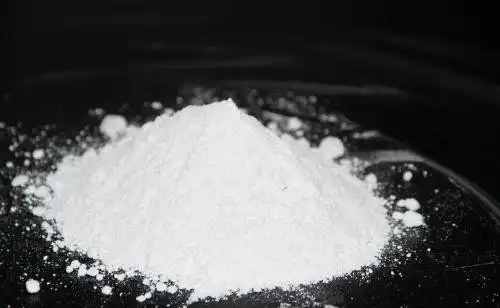Magnesium oxide is a material that everyone is familiar with. It is a fairly common alkaline oxide and is the main raw material for the production of magnesium hydroxide and magnesium metal. Hebei Messi Biology Co., Ltd. stated that in the field of electronic ceramics, magnesium oxide has some special and excellent properties because its melting point is as high as 2800℃. In terms of specific applications, it can be divided into two ways: direct sintering into ceramics and using it as a sintering aid for other ceramics.
① Direct sintering into ceramics
Nano magnesium oxide is a good ceramic raw material. Because it has good heat resistance and strong corrosion resistance to alkaline metal solutions (it does not work with magnesium, nickel, uranium, aluminum, molybdenum, etc.), the application of magnesium oxide ceramics is often always related to high temperature environments.

In terms of preparation, due to the close packing density of ions in the magnesium oxide lattice, the high symmetry of ion arrangement, and few lattice defects, it is difficult to sinter. Therefore, in order to promote sintering and make the grains grow slightly, and at the same time to reduce the hydration tendency of the preparation, some additives such as TiO2, Al2O3, V2O3, etc. can be added. If high-purity magnesium oxide ceramics are required, the method of adding additives to promote sintering and grain growth cannot be used. Instead, the method of activated sintering is used, that is, magnesium hydroxide is calcined at an appropriate temperature to obtain active magnesium oxide with many lattice defects, which is used to make sintered magnesium oxide ceramics.
In terms of application, magnesium oxide ceramics can be used as crucibles for smelting metals. In the atomic energy industry, it is also suitable for smelting high-purity uranium and thorium; it can also be used as thermocouple protection sleeves. Using its ability to allow electromagnetic waves to pass through, it can be used as a radome and infrared radiation projection window material, and as a crucible for smelting metals and alloys, such as nickel alloys, radioactive metal uranium, thorium alloys, iron and its alloys. It is a raw material for piezoelectric and superconducting materials, and is pollution-free and resistant to lead corrosion; it can also be used as a ceramic sintering carrier, especially for the sintering protection of ceramic products with corrosive and volatile substances at high temperatures such as β-Al2O3.
② Used as a sintering aid for other ceramics
Adding nano magnesium oxide in the preparation process of other ceramics can reduce the glass transition temperature, reduce the sintering temperature, improve the optical and mechanical properties of ceramics, and thus obtain high-quality ceramic materials.
For example, silicon nitride ceramics have become one of the most promising high-temperature structural materials due to their excellent high-temperature strength, thermal shock resistance and chemical stability, but their strong covalent bonds and low diffusion coefficient make it difficult to sinter and densify. However, if metal oxides such as magnesium oxide are added, they can react with silicon dioxide on the surface of silicon nitride powder during the sintering process to form a silicate liquid phase, thereby effectively promoting the sintering of silicon nitride ceramics. At present, MgO-Y2O3 composite sintering aids are generally used to achieve atmospheric pressure sintering of silicon nitride ceramics.
